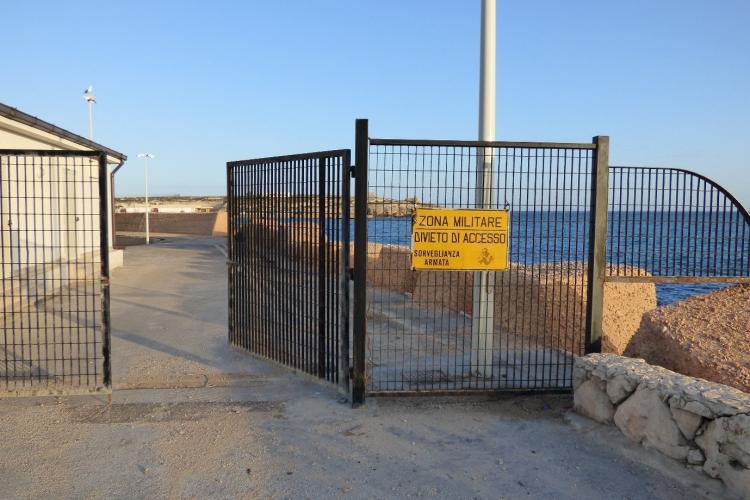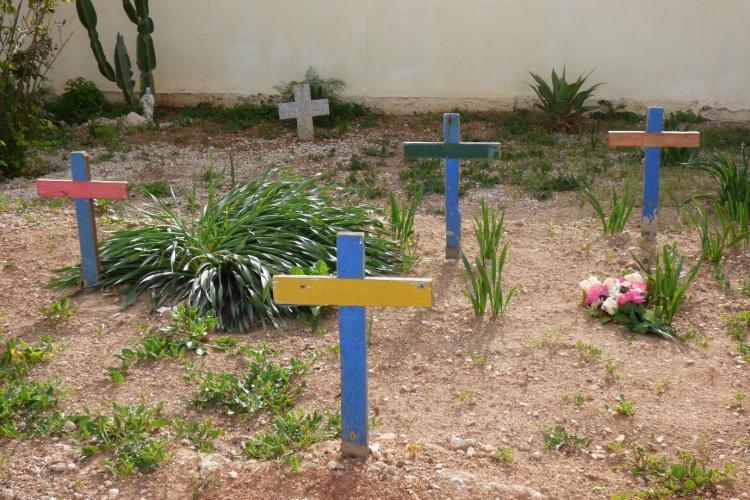Guest post by Francesca Soliman. Francesca is a PhD student at the University of Edinburgh. Francesca’s research looks at the social harms caused by borderisation, with a particular focus on the impact on border communities. Francesca uses zemiology as a framework to analyse the impact of border policies, and she has published her methodology under the title “States of exception, human rights, and social harm: Towards a border zemiology” in the journal Theoretical Criminology. In this blog post Francesca summarises some of the key findings from her fieldwork on Lampedusa. This post is part of a collaboration between Border Criminologies, Theoretical Criminology and Sage Journals that seeks to promote open access platforms. As part of this initiative the full article, on which this piece is based, will be free to access here for the next three months.
Crimmigration has challenged our traditional understanding of crime and punishment; however, while crime and migration control are certainly intertwined, they exemplify very diverse forms of state power. In a recent article I argue that crimmigration is not an effective lens through which to understand border control practices and their wider impact. Instead, I advocate adopting a zemiological (i.e. social harm-based) approach, which pays due attention to the structural factors that generate social harms without being constricted within narrow juridical or jurisdictional boundaries.
Critics have argued that zemiology stands on shaky ontological and epistemological grounds. In the article I address these objections by proposing a zemiological methodology designed for the empirical study of border-related social harms, embracing a critical realist view of society and Fraser’s idea of social justice. I applied this framework during my PhD research, which explored the social harms of borderisation on a border community; this blog post summarises some key findings from my PhD fieldwork, an ethnography of the Mediterranean island of Lampedusa.
Law and border

Borderisation required the presence of large numbers of law enforcement and military agents on Lampedusa, far beyond the needs of the 6,000-strong community, yet residents told me that state authorities had no interest in dealing with local concerns. Many residents considered Lampedusa a crime-free society where law enforcement was unnecessary, so they welcomed authorities’ hands-off approach. However, others described a “Faustian pact” where the state refrained from interfering with the community’s affairs in return for tolerance of the border’s presence. For these residents Lampedusa was not crime-free at all, but a place where illegality was normalised. By not enforcing the law, authorities legitimised this permanent illegality, increasing insecurity for part of the population. Women, for instance, would privately admit fears of gender-based violence and sexual harassment, which they described as rife, but underacknowledged. Authorities’ neglect thus exacerbated inequalities in the community’s experience of security, failing to protect those more vulnerable to victimisation.
Humanitarian racism

Migrants arriving in Lampedusa were meant to be swiftly transferred to the mainland following identification in the island’s Hotspot, but their stay would often stretch into weeks or months. Given the poor conditions inside the Hotspot, migrants would be unofficially allowed to exit through a hole in the fence and walk into town. Speaking to residents about their daily interactions with migrants, I found that the two groups largely had no contact. Still, most residents reported some degree of hostility towards North African migrants, while sub-Saharan African migrants were considered in need of help and protection. This view was common among both supporters and opposers of migration, broadly reflecting the asylum system’s categorisations of North Africans as economic migrants and sub-Saharans as refugees. While this racialised hierarchy of victimhood appeared to overturn colourism by being more sympathetic to those with darker skins, the victim-saviour dynamic assigned them a subordinate position compared to residents. The paternalistic views of helpless and passive sub-Saharans expressed by residents seemed a continuation of colonial racial stratification; support for refugees thus did not signify a lack of bias, nor did it challenge the racist foundations underpinning anti-migrant sentiments.
Border economy

Borderisation corresponded with a complete overhaul of the island’s economy, which switched from fishing to tourism. The tourism industry was intertwined with border control: while the salience of migration news kept Lampedusa’s name in the media, bad publicity could also lead to booking cancellations and the loss of a season’s income. This was a constant source of anxiety for the local population, although a small minority would profit from times of crisis by providing accommodation to the influx of state agents. Still, the border unequivocally had a negative impact on Lampedusa’s remaining fishing industry. Fishing boats struggled to find mooring space in the harbour, which had been taken over by law enforcement and military vessels or was occupied by confiscated migrant boats. When out at sea, trawlers would get damaged by the wrecks of abandoned migrant boats, which ripped fishing nets and put crews’ lives at risk.
Environmental damage

A danger to trawlers, sunken wrecks were also hazardous to the environment, with pollutants such as oil and fuel seeping into the sea. Migrant boats that reached the island (whether independently or towed by rescuers) would accumulate in the harbour and eventually break up, scattering debris in bad weather. Boats uplifted onto land were amassed in large “boat cemeteries”, where they leaked pollutants into the soil. Periodically, the resulting environmental crisis would trigger an emergency tendering process for the disposal of the boats, which paradoxically allowed for the usual environmental protections normally required in public bidding to be suspended for the sake of expediency.
Spectacle and trauma

Lampedusa’s perpetual state of crisis affected not only its economy, security, and environment, but also residents’ wellbeing. The psychological impact of living in a borderised space was rarely acknowledged; still, residents told me stories of personal involvement in the aftermath of tragedies, such as contributing to rescue operations, witnessing the cries of survivors, hosting the families of victims. Countless coffins had been transported through the town over the years, rapidly filling up the local cemetery. These traumatic experiences were routinely appropriated and squeezed into self-serving narratives by journalists, politicians, and researchers, with little consideration of the cumulative impact of secondary trauma on residents. The world’s gaze had become part of the borderisation process itself, as the border spectacle normalised the exclusionary violence of the border and the exploitation of Lampedusa’s community.
In conclusion, the research showed that Lampedusa’s population routinely suffered economic, cultural, environmental, physical, and psychological social harms; however, consideration of Lampedusa’s specific historical context was necessary to uncover the structural factors behind these harms and the causal impact of borderisation.
Any comments about this post? Get in touch with us! Send us an email, or post a comment here or on Facebook. You can also tweet us.
__________
How to cite this blog post (Harvard style)
Soliman, F. (2020). Towards a Border Zemiology: Notes from the Field. Available at: https://www.law.ox.ac.uk/research-subject-groups/centre-criminology/centreborder-criminologies/blog/2021/02/towards-border [date]
Share:








